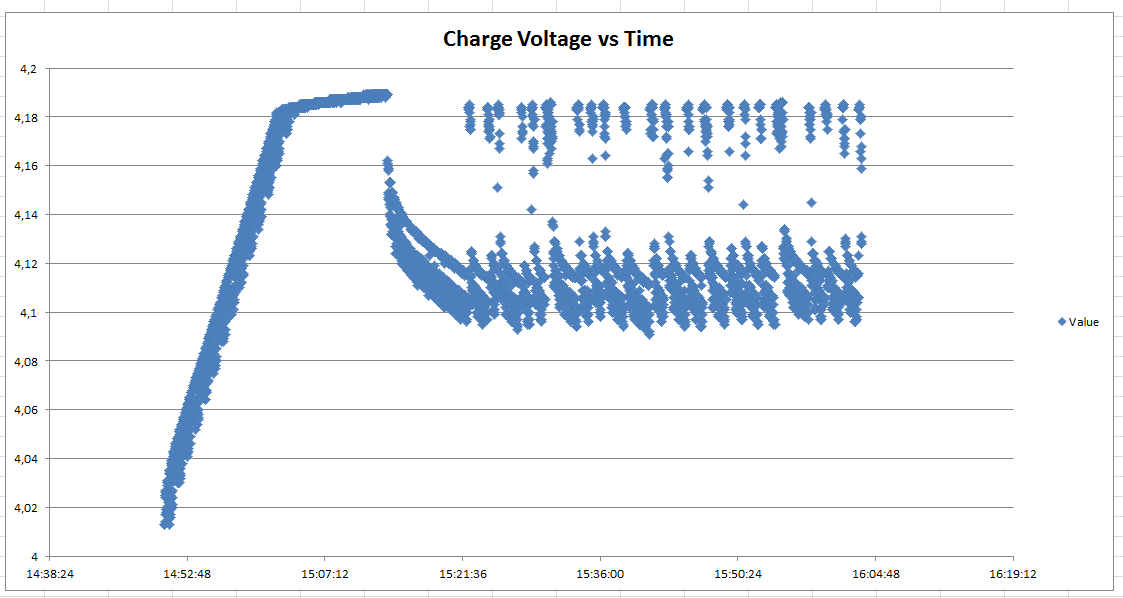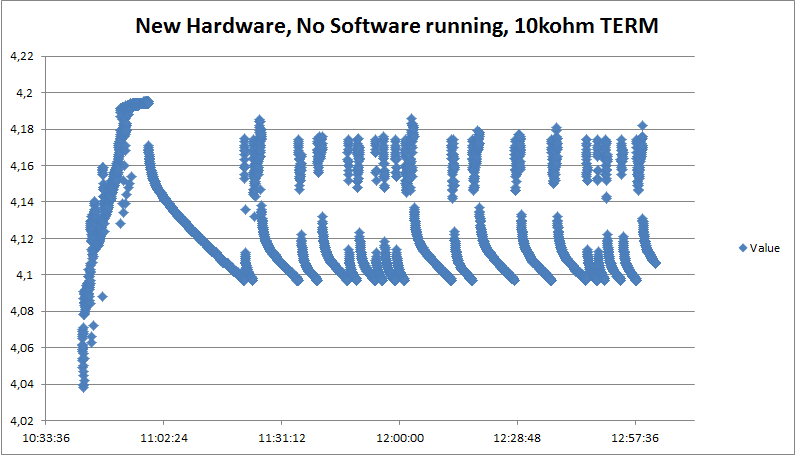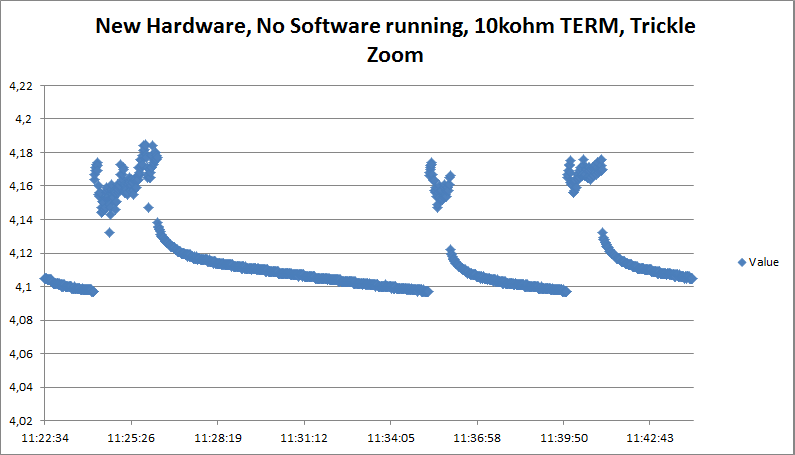Dear All,
I am troubleshooting a wireless charger/receiver solution using BQ51050B and BQ500212A. The following sequence is currently taking place:
* Charge up to 4.2V works as expected (blinking green LED)
* "Charge Complete" appears to work as expected since I get a solid green LED for 5 seconds, followed by the green LED being off. I also see a drop of the battery voltage when this happens.
* About 1-2 minutes after this, the charging process starts again. And terminates with a "Charge Complete". This appears to go on forever.
Topping up the battery (i.e. tricke charging) every few minutes seems to be a bit too frequently in my opinion. Is this normal?
I read in the BQ500212A datasheet that "If the reported charge status drops below 90% normal, charging indication will be resumed.". I can not, however, find out what 90% of reported charge status means. Is it related to voltage? Current? Something else?
I use a maximum charge current of 75mA, and have the termination set to ~30mA. This is hopefully a temporary solution, but is currently required since the rest of the wireless device consumes between 1 and 20mA depending on the current workload. I assume that this means that I can not use a charging termination current of less than ~30mA since the charging would not report charging complete reliably. However, I am a bit worried that this means that the battery will not fully charge.
In summary, I have the following two questions:
* Is a trickle charge frequency of ~1-0.5/min normal?
* If not, how is the "90% charge status" calculated?
* Could this be related to my high termination current?





